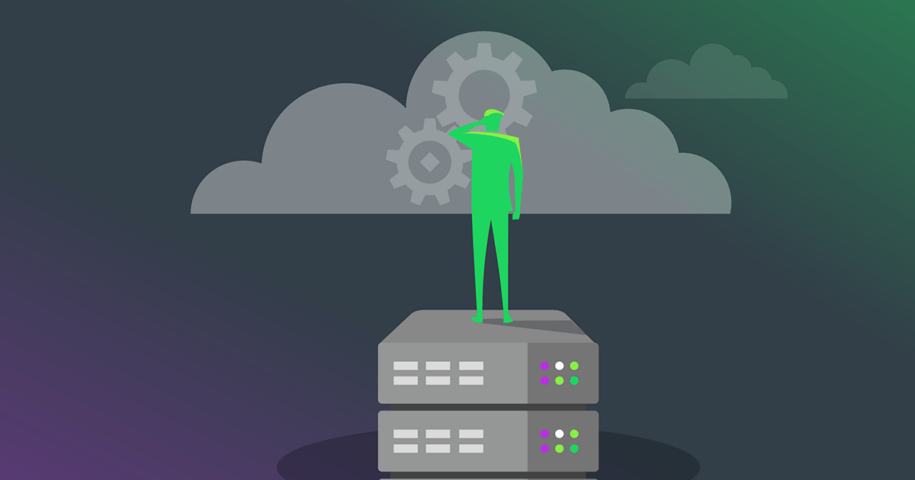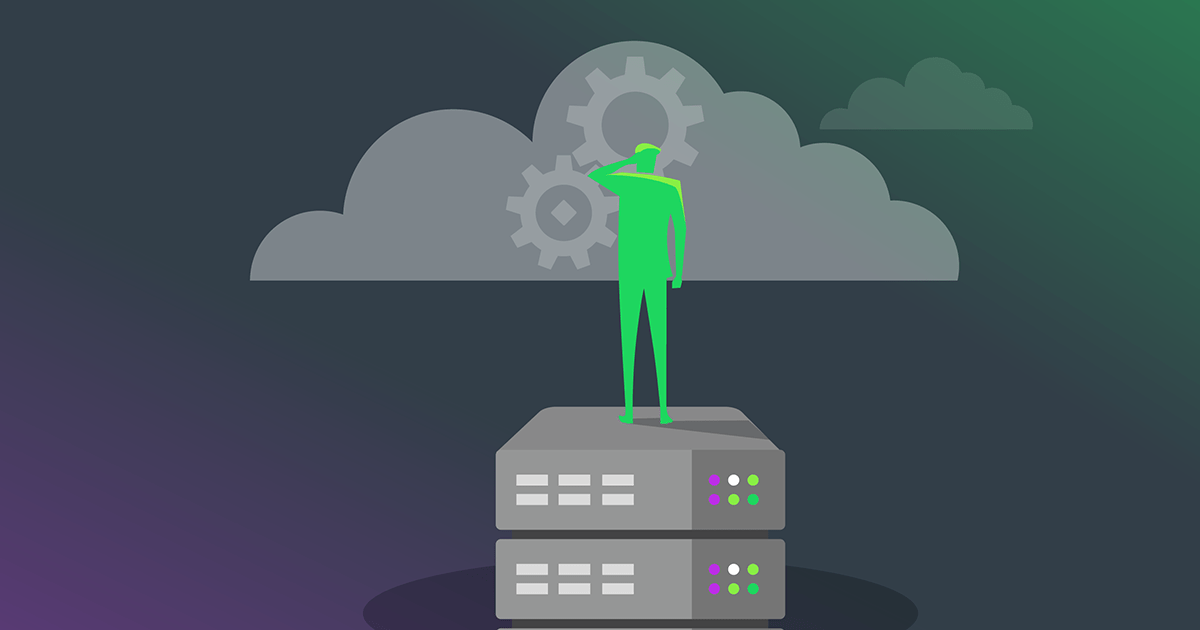One of the major takeaways from the 2025 Monetization Monitor is the remarkable staying power of on-premises deployment models, which are set for steady growth alongside SaaS, cloud, and embedded technologies, raising questions around how to license software in a hybrid world.
Since the dawn of cloud platforms, the received wisdom has been that most on-prem products will transition to SaaS, and while this may eventually prove to be true, the traditional approach isn’t declining at the speed many predicted.
In fact, 56% of Monetization Monitor respondents believe on-premises software will grow as a percentage of overall revenue by 2026, which is a 10% rise on figures reported in 2023 and a significant 31% increase from 2022.
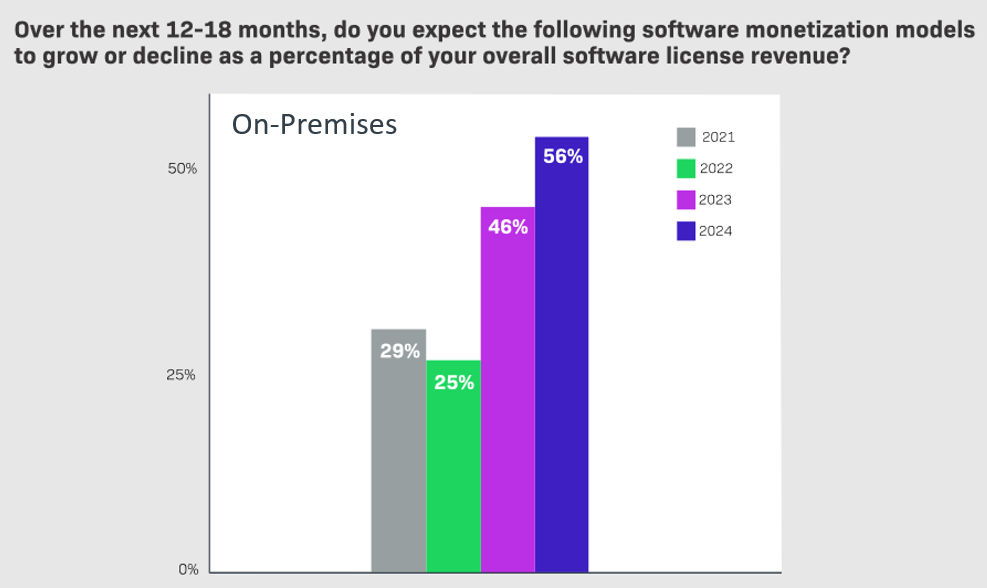
The data suggests many producers are re-evaluating their direction, moving from cloud-first to cloud-smart strategies whereby hybrid models are now regarded as the optimal approach as some applications are simply better suited to on-site systems – and this isn’t likely to change in the near future.
Ultimately, while suppliers may have ambitions to take products to the cloud, various on-premises use cases still need to be served, such as air-gapped manufacturing environments or when selling to regulated industries that have strict security protocols.
Staying Ahead of Market Trends
As hybrid deployments grow in prominence, buying behaviors are also changing, with usage-based licensing and outcome or value-based monetization continually rising year-on-year, as customers seek to gain more flexibility and control.
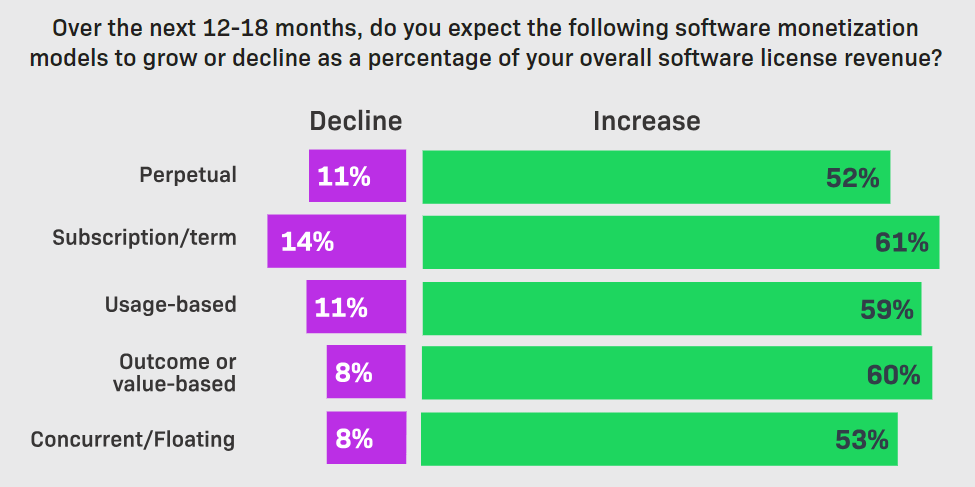
Therefore, the landscape is increasingly complex, as producers ponder how to license software on two fronts:
- To support multiple deployment models.
- To enable diverse monetization strategies.
The evolving hybridization of product lines and revenue structures means it’s advisable to periodically review back-office systems to ensure your needs are met in the most logical fashion, while also providing the level of usage insights customers expect today.
How to License Software at Scale
If you’re a startup with a single product and fairly simple business model, a homegrown software licensing process could be sufficient in the early stages.
However, larger enterprises offering multiple software monetization models across several products and deployments soon realize that back-office infrastructure developed in-house lacks the natural scalability of commercial solutions, which are designed with hybrid models in mind.
Technology business analysts, Frost & Sullivan track global market trends on the topic of how to license software, and their latest report suggests:
“Homegrown solutions may seem like an attractive proposition; however, they can be costly to implement and maintain over the long term. For example, adding a new licensing model requires a full development cycle, burdening development teams, impacting roadmaps and drawing away the time-to-market for new product releases.”
In contrast, a specialized software licensing service should essentially provide out-of-the-box functionality for a broad range of business models, empowering you to implement hybrid strategies with relative ease.
According to VDC Research‘s 2024 Voice of the Engineer Survey, at least 34.7% of software engineering projects are behind schedule:
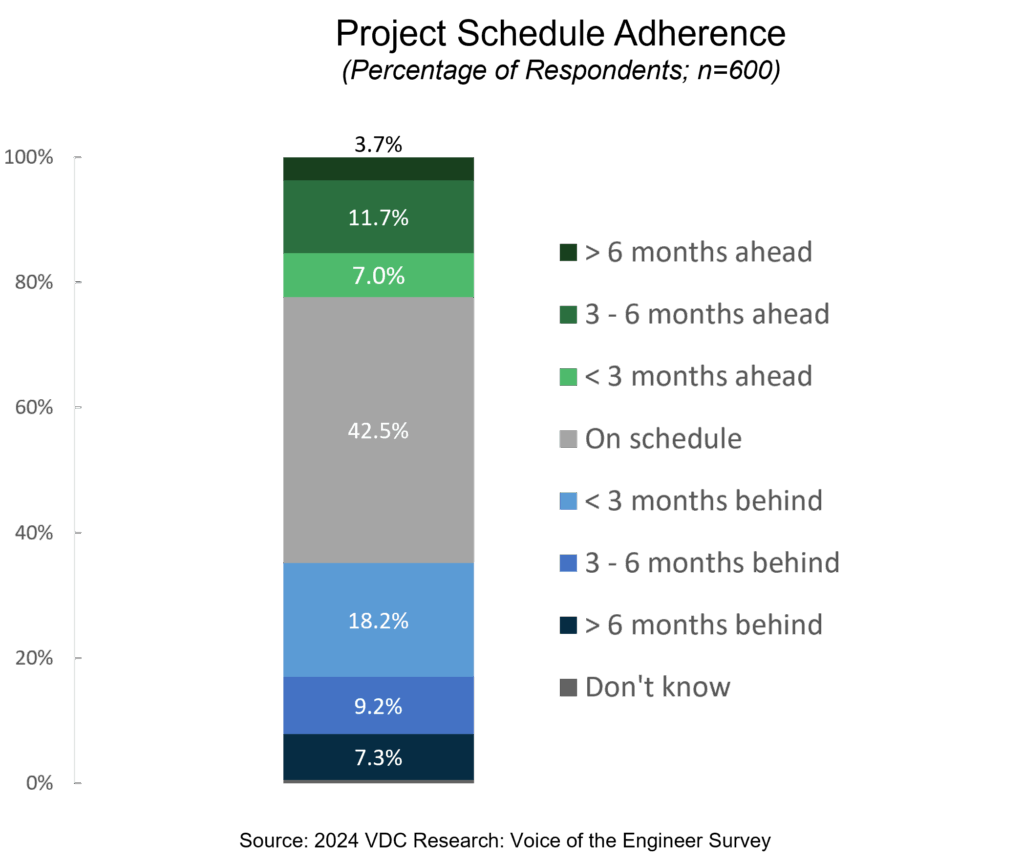
With such a high proportion of roadmaps falling behind, there’s clearly a need for leadership teams to identify and remove barriers to product development, as missed deadlines can severely impact revenue growth.
As such, adopting a purpose-built platform that effectively supports ‘plug and play’ flexibility will eliminate a source of technical debt, allowing you to significantly reduce time-to-market and focus on revenue-generating enhancements rather than maintaining unwieldy homegrown infrastructure.
Read More:
Software Monetization Solutions: The Build or Buy Debate
Managing Complexity
The image below outlines a typical maturity curve for technology companies, and the issue of how to license software becomes progressively challenging as new models are introduced over time.
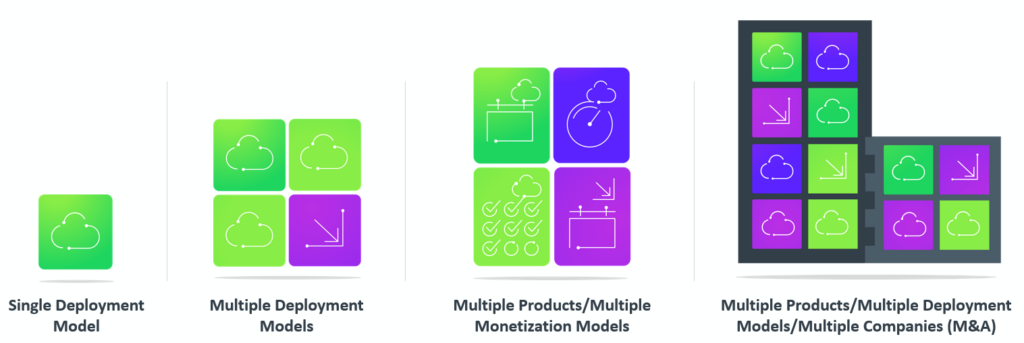
Complexity is further compounded for companies that grow via mergers and acquisitions, as maintaining disparate entitlement management and licensing systems is expensive and inefficient, with no means of consolidating customer data for clear visibility.
However, choosing to streamline operations with a unified approach to delivery, fulfillment, and software usage reporting ensures complete transparency with a ‘single pane of glass’ for both buyers and suppliers, aiding compliance, renewals, and upsell or cross-sell initiatives across all deployments.
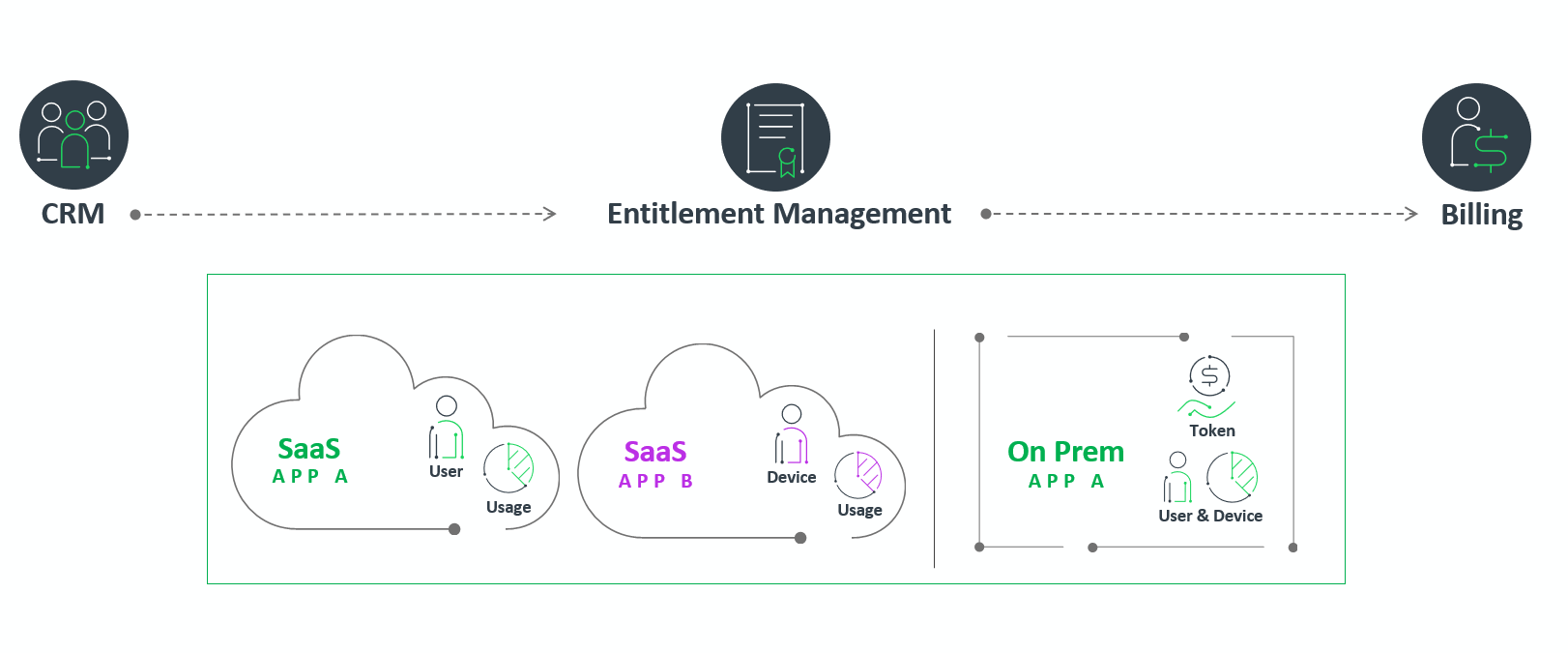
Additionally, a centralized entitlement management system should facilitate end customer self-service, allowing enterprise admins to activate licenses and monitor utilization – reducing support tickets and improving user satisfaction.
As your business evolves, complexity will be introduced at every corner, but simplifying back-office processes with an agile platform that instantly enables multiple software licensing methods for SaaS, on-premises, and embedded environments can help future-proof your monetization goals.
The Benefits of Centralization
Centralization is clearly the direction of travel, as 54% of Monetization Monitor respondents state they now use the same monetization technology across all product lines – a 9% increase from the previous year.
Furthermore, those respondents who’ve invested in commercial solutions to license software and provision use rights report the following benefits:
- 65% believe their pricing is “totally aligned” to the value delivered to customers, compared to just 32% overall.
- 66% report the ability to collect product usage data “very well,” compared to 40% overall.
- 93% have transitioned at least some products from on-premises to SaaS deployments, compared to only 55% of those using homegrown systems.
As such, embracing a commercial solution could be pivotal in helping you foster long-term loyalty with a low SaaS churn rate as you grow recurring revenue with happy customers who stick by your side throughout the hybrid journey.
Read more:
SaaS Use Rights: IAM vs. Entitlement Management
Hybrid Access Strategies
If you need advice on how to license software for your current and future needs, Revenera’s expert team is here to help.
Built on decades of industry experience, our software licensing solutions are used by global technology companies at the forefront of innovation, many of whom are maximizing the profitability of desktop applications and intelligent devices while also building new products in the cloud.
With FlexNet Licensing, you can maintain traditional go-to-market strategies for on-premises solutions while launching modern access models for SaaS as you navigate how to monetize AI, helping you stay relevant and adapt at speed.
Learn more about our monetization services in this short video:
If you’d like further information about working together, please contact us to arrange a call with a hybrid software monetization expert.
You can also browse our case studies to see how we’ve helped other producers, such as Teradici and Ikon Science.
